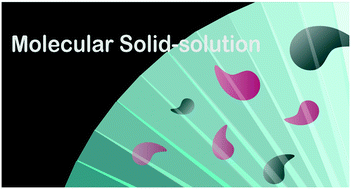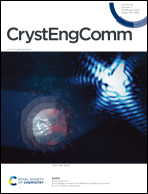Molecular solid solutions for advanced materials – homeomorphic or heteromorphic
Abstract
Materials are often functionalised using diverse molecular designs. This is in stark contrast to inorganic materials, whose properties are diversified by designing a blend of atoms/ions in a solid solution (mixed crystal or alloy). The miscibility of the molecules is dependent not only on the size but also on the symmetry of the molecule and lattice. Thus, it is difficult for molecular crystals to have high miscibility compared to inorganic materials. The current paper focuses on the recent research and important pioneering works on functional molecular solid solutions. In addition to solid solutions in which molecules and lattices are similar (homeomorphic), the development of materials in which geometrically dissimilar (heteromorphic) molecules are dissolved has also been highlighted.

- This article is part of the themed collection: 2022 Highlight article collection


 Please wait while we load your content...
Please wait while we load your content...